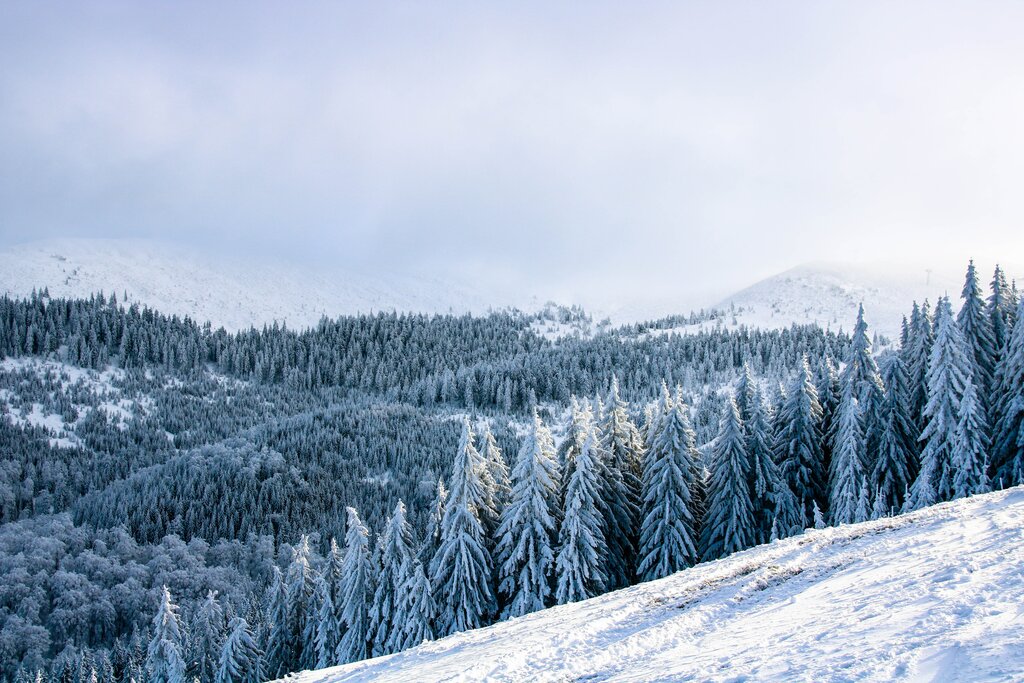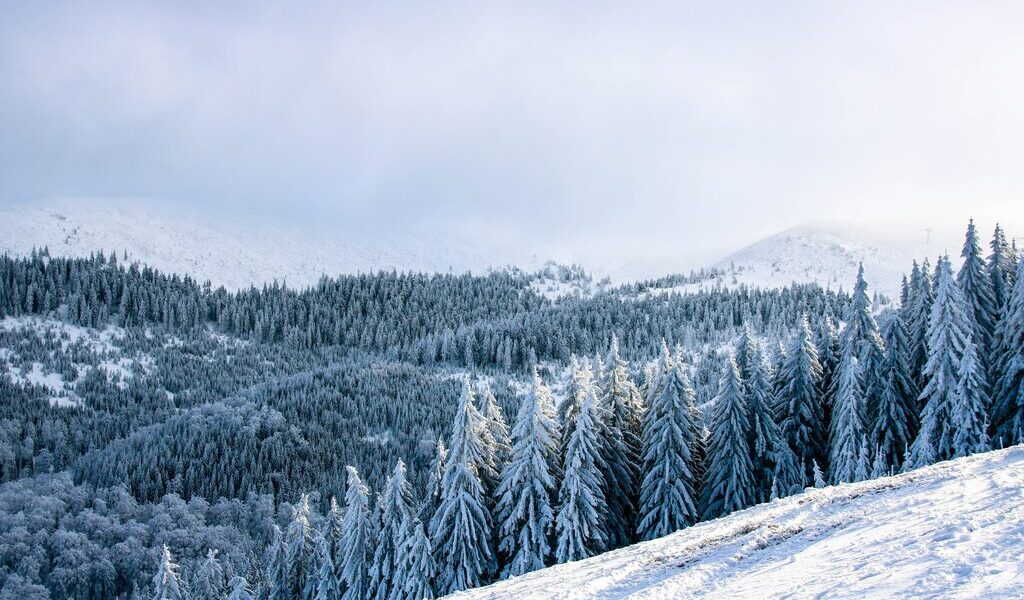
December is mid-winter in Romania, and that means cold temperatures and landscapes blanketed in snow and ice. Christmas markets add festive cheer to towns and cities. Read on to find out more about visiting Romania in December.
December in Romania offers a unique travel experience, especially for those seeking a winter wonderland off the beaten path. While much of Europe is bustling with pre-Christmas activity, Romania provides a quieter, more authentic atmosphere. Understanding the weather, travel costs, and regional highlights will ensure a memorable trip.
**Weather in December**
December marks the true beginning of winter in Romania. Although November often hints at the colder months ahead, December solidifies the transition. It’s essential to be prepared for potentially harsh conditions. The Romanian landscape can be broadly classified into three distinct climatic zones. The area west of the **Carpathian Mountains** generally experiences milder winters compared to other regions. This is due to the mountains providing some shelter from the harsher weather patterns coming from the east. In contrast, the eastern region of Romania endures significantly colder winters, characterized by lower temperatures and heavier snowfall. This area is more exposed to the continental air masses that bring freezing conditions. Finally, the coastal **Black Sea** region enjoys a more Mediterranean climate, resulting in relatively mild winters compared to the rest of the country. The influence of the sea helps to moderate temperatures, making it a slightly more temperate option.
Across Romania in December, the average temperature range fluctuates between 26° and 39°F (-3° and 4°C). While these are average figures, it’s important to remember that temperatures can drop considerably lower, especially at night and in the mountainous regions. Rainfall is typically low to moderate throughout December. Snowfall is common, especially in the mountainous areas, adding to the picturesque winter landscapes. Although January is statistically considered the coldest month, December can certainly feel just as frigid. Unusually cold temperatures are not uncommon. Icy winds sweeping in from Russia can significantly exacerbate the perceived chill factor, making it feel even colder than the thermometer indicates. Dressing in layers is highly recommended to stay warm and comfortable during your travels.
**Crowds and Costs**
December falls squarely within the low season for tourism in Romania. The peak season is during the warmer summer months. Consequently, you’ll find fewer tourists and a more relaxed atmosphere throughout the country. This translates to lower prices for accommodation, transportation, and some activities. It’s worth noting that even during peak season, Romania is generally more affordable than many other European destinations. In December, the cost savings can be even more significant.
While you’re unlikely to encounter large crowds in most places, there might be some exceptions. The most popular Christmas markets, particularly those in larger cities, may attract a significant number of visitors. However, these markets are generally frequented more by locals than by foreign tourists, offering an authentic glimpse into Romanian Christmas traditions. Ski season begins to gain momentum in December, especially later in the month as snow conditions improve. This can lead to slightly increased activity in ski resorts.
**Where to Go**
The majority of Romanians adhere to the Romanian Orthodox Christian faith, celebrating Christmas on December 24th and 25th. While there are also Roman Catholics and Protestants in the country, the Orthodox traditions dominate the Christmas celebrations. For an unforgettable Romanian Christmas experience, consider visiting **Maramures** and **Bucovina**, both located in the northern part of Romania. These regions are renowned for their rich cultural heritage and are considered highlights for visitors throughout the year. However, they take on an extra special charm during the Christmas season.
Bucovina is famous for its UNESCO-listed medieval monasteries, adorned with stunning frescoes both inside and out. These monasteries offer a glimpse into Romania’s religious history and artistic traditions. Maramures is characterized by its magnificent wooden churches, traditional houses, and intricately carved wooden gates. The craftsmanship and artistry displayed in these structures are truly remarkable. If you’re interested in experiencing traditional Christmas markets, the cities of **Cluj-Napoca** and **Sibiu**, both located in the region of **Transylvania**, are widely regarded as having some of the best. These markets offer a festive atmosphere with stalls selling traditional crafts, food, and drinks.
**What to Do**
The ski and snow sports season in Romania typically kicks off in November. By December, the conditions usually stabilize, making it an ideal time for skiing and snowboarding. A major advantage of skiing in Romania is its affordability compared to popular destinations such as the Alps. **Poiana Brasov**, situated near the city of **Brasov**, is one of Romania’s most popular and luxurious ski resorts. It has even been recognized as one of the most affordable ski resorts in Europe, offering excellent value for money. Poiana Brasov boasts an impressive 14-mile (23-km) ski and snowboarding slope. Other notable ski resorts in Romania include **Straja, Sinaia**, and **Predeal**, each offering a unique experience for winter sports enthusiasts.
**Events in December**
* **Great Union Day**, 1st December: This is Romania’s national holiday, commemorating the union of Transylvania, Bessarabia, and Bukovina with the Romanian Kingdom in 1918. Expect national flags and potentially some public celebrations.
* **Christmas Day**, 25th December: Romanian Orthodox Christians celebrate Christmas on this day.
* **Winter Customs Festival**, late December: This lively festival takes place in Sighet, near the border with Ukraine.
(Word Count: 742)
B-2198

